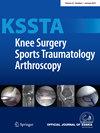Effect of the patient-specific instrumentation guidance on the accurate positioning of the baseplate and screws in reverse total shoulder arthroplasty: Multicenter comparative study
Abstract
Purpose
To evaluate the accuracy of implant placement using patient-specific instrumentation (PSI) in reverse total shoulder arthroplasty (RTSA) compared to conventional techniques, and to determine whether PSI enhances the precision of glenoid component and screw positioning.
Methods
This retrospective, multi-centre comparative study included 135 patients who underwent primary RTSA across four tertiary medical centres. Patients were divided into two groups: 65 received RTSA with PSI, and 70 underwent conventional RTSA. PSI employed 3D-printed guides, based on preoperative CT scans, to precisely guide the placement of the glenoid component and peripheral screws. Postoperative imaging was used to assess screw trajectory and length, as well as baseplate version, inclination, and entry point trajectory.
Results
PSI demonstrated significantly greater accuracy in baseplate positioning compared to conventional methods, with improved outcomes in version (mean deviation: 1.5 ± 1.1° vs. 6.7 ± 5.4°, p < 0.001), inclination (2.8 ± 1.5° vs. 5.3 ± 3.7°, p = 0.012), and entry point location (1.9 ± 1.2 mm vs. 3.2 ± 1.5 mm, p = 0.037). Although mean postoperative screw lengths were greater in all directions in the PSI group, the differences were not statistically significant (all p > 0.05). Similarly, deviations from planned screw lengths were lower in the PSI group but did not reach statistical significance (all p > 0.05). Notably, PSI significantly improved the precision of peripheral screw trajectories, particularly in the superior and inferior screws across superior–inferior (S/I: p = 0.037 and p = 0.012) and anterior–posterior directions (A/P: p = 0.043 and p = 0.015), as well as in anterior (p = 0.004) and posterior screws (p = 0.008) in the A/P direction. The PSI group also had significantly fewer cases of screw prominence (9 vs. 23), and no cases of screw insertion failure or notch involvement were observed. No major complications occurred in either group.
Conclusion
PSI significantly improves the accuracy of implant placement in RTSA compared to conventional techniques, potentially reducing postoperative complications.
Level of Evidence
Level III.


 求助内容:
求助内容: 应助结果提醒方式:
应助结果提醒方式:


